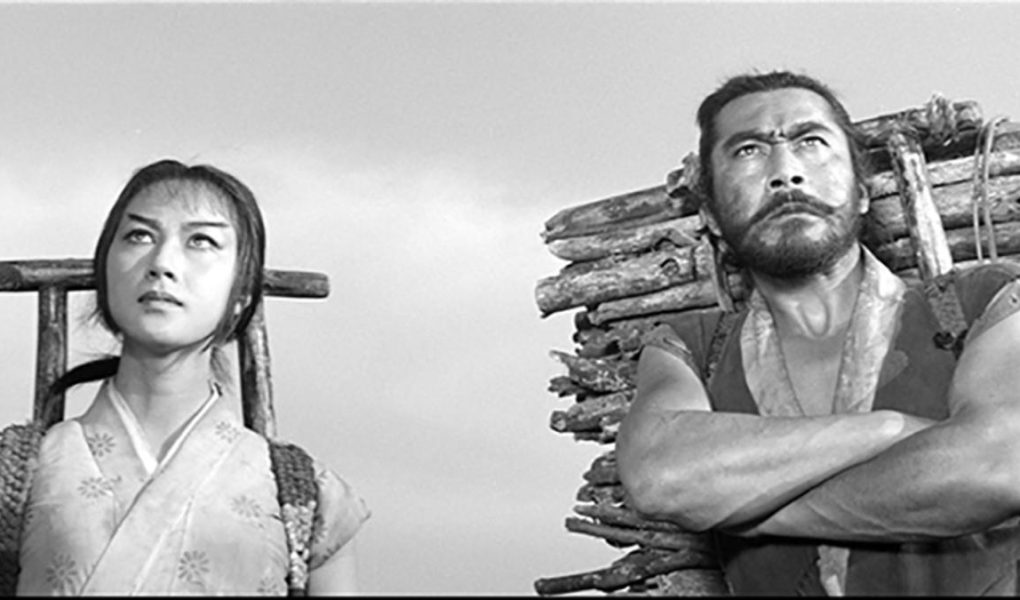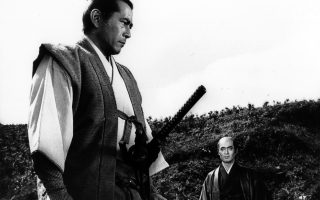marwaarsanios.info – The Hidden Fortress (1958), directed by Akira Kurosawa, is a cinematic adventure that blends action, humor, and profound themes of loyalty, honor, and human nature. One of the director’s most commercially successful films, The Hidden Fortress combines Kurosawa’s mastery of storytelling with a unique structure and a sense of adventure that has had a lasting influence on the world of cinema. While it is often regarded as one of Kurosawa’s more accessible works, The Hidden Fortress is also a film of considerable depth, tackling themes of social hierarchy, personal loyalty, and the clash between personal ambition and collective duty.
Set in feudal Japan, The Hidden Fortress follows the journey of two lowly peasants, Tahei (Toshiro Mifune) and Matashichi (Minoru Chiaki), who become involved in a dangerous quest to transport gold and a princess across enemy lines. As they accompany a general and his army on their mission, the film mixes adventure with comedy, while also exploring themes of leadership, bravery, and personal transformation. Its innovative use of point of view, particularly the peasants’ perspective, and its unforgettable characters make The Hidden Fortress an enduring classic.
Plot Overview: A Quest for Gold, Honor, and Survival
The story is set during Japan’s Warring States period, where two peasants, Tahei and Matashichi, find themselves in a desperate situation after being caught on opposite sides of a losing battle. After narrowly escaping capture, they hear of a large sum of gold hidden in a distant fortress, which is rumored to be guarded by a powerful general and his forces. The peasants, motivated by greed and the promise of wealth, set out on a perilous journey to find and steal the gold.
However, they soon find themselves caught up in a much larger and more dangerous mission. The gold is actually being carried by a general named Rokurota Makabe (Toshiro Mifune), who is secretly escorting a princess, Yuki (Misa Uehara), and her retinue across enemy territory. The general and the princess are on a mission to reunite with the remnants of their clan, and their journey is fraught with peril, as they are pursued by rival forces.
The peasants are unaware of the larger political struggle at play, and much of the film’s tension arises from the dramatic irony that we, the audience, know that the gold they seek is not as important as the more significant mission at hand. As the peasants become involved in the larger story, they are forced to reckon with the complex dynamics of loyalty, leadership, and survival.
The Central Characters: Peasants and Heroes
What distinguishes The Hidden Fortress is its focus on two seemingly insignificant characters, Tahei and Matashichi, who provide the film’s comedic and humanizing elements. Unlike traditional hero figures, the peasants are portrayed as greedy, self-interested, and far from heroic. Their primary motivation throughout the film is to secure the gold and escape with it, but their journey gradually reveals more about their characters and the broader themes of the story.
Tahei and Matashichi are portrayed as bumbling and somewhat cowardly, often bringing humor to the otherwise serious story. Their perspective on the events surrounding them is one of selfishness and survival, and this is where much of the comedy arises. The peasants’ point of view contrasts with the more noble and stoic figures of General Rokurota Makabe and Princess Yuki, who are embroiled in a much more significant political and emotional struggle. The peasants’ moral transformation over the course of the film is subtle but effective, as they gradually come to understand the larger stakes of their journey and the true meaning of honor and loyalty.
On the opposite end, General Rokurota Makabe is a stoic and capable leader who embodies the virtues of honor and duty. Though he is constantly under threat and faced with numerous challenges, his calm demeanor and strategic mind guide him through the most difficult of situations. Princess Yuki, though initially presented as a helpless figure, proves to be strong and resilient, playing a vital role in the unfolding of events. Their evolving relationships with the peasants serve to highlight the contrast between personal ambition and collective duty.
Themes: Honor, Loyalty, and the Human Condition
The Nature of Heroism
At its core, The Hidden Fortress is a film about heroism in all its forms. While the peasants are far from traditional heroes, they ultimately experience a form of redemption by learning the true meaning of loyalty and honor. Their arc reflects a broader theme of personal growth and the transformation that comes from engaging with the larger struggles of society.
On the other hand, the general and the princess represent a more traditional form of heroism—one defined by sacrifice, duty, and a commitment to a cause greater than oneself. While the peasants start out seeking gold for their own gain, the general and the princess are driven by the desire to preserve their clan and fight for a cause that transcends personal survival. This juxtaposition of self-interest and selflessness is central to the film’s exploration of the nature of heroism.
Loyalty and Sacrifice
The theme of loyalty is pervasive throughout The Hidden Fortress. The peasants, initially motivated by personal greed, eventually learn that true loyalty goes beyond self-interest. They are forced to choose between loyalty to their own desires and their loyalty to the princess and the general. As the film progresses, the characters’ development highlights the importance of self-sacrifice for the greater good. General Makabe and Princess Yuki’s unwavering commitment to their mission serves as a powerful example of the sacrifices that come with leadership and the responsibility to others.
For the peasants, their journey is a gradual realization that the quest for gold and personal glory is less important than the loyalty and bonds they form with others. The ultimate lesson they learn is that true heroism lies not in selfish pursuits but in the ability to rise above personal desire for the sake of something greater.
The Clash of Social Hierarchies
Another theme that is explored in The Hidden Fortress is the complex and often rigid social hierarchy in feudal Japan. The peasants, with their lowly status, represent the marginalized and disenfranchised members of society. In contrast, the general and the princess are from the noble class, their lives defined by duty, power, and responsibility. Throughout the film, the peasants are forced to interact with the nobility, and while their motivations and actions may seem petty, their role in the story reveals the ways in which the lower classes are affected by, and sometimes pivotal to, the larger events of history.
The film ultimately suggests that the social hierarchy is not as straightforward as it may appear. Through the peasants’ interaction with the aristocracy, The Hidden Fortress demonstrates how even the most ordinary people can have a significant impact on the world around them. The peasants’ eventual transformation into more noble figures highlights the possibility for personal growth and redemption, regardless of one’s social status.
Cinematic Innovation: Kurosawa’s Visual Mastery
Kurosawa’s direction in The Hidden Fortress is marked by innovative visual techniques that would later influence generations of filmmakers, most notably George Lucas in creating Star Wars. The film is structured in such a way that much of the narrative is experienced from the perspective of the two peasants. This point of view gives the film a fresh and humorous angle, allowing the audience to sympathize with the peasants’ motives while simultaneously engaging with the larger, more serious themes of the story.
One of the film’s most notable features is its use of framing and camera movement. Kurosawa employs wide shots to capture the grandeur of the landscapes and the scale of battle, while also using intimate close-ups to capture the emotions of his characters. The balance between the grand and the personal is key to the film’s impact, as it allows the audience to feel both the weight of the political struggle and the humor of the peasants’ antics.
Kurosawa’s mastery of action sequences is also on full display, particularly in the film’s many moments of suspense and combat. The action is dynamic, fast-paced, and exhilarating, contributing to the film’s sense of adventure. The pacing is expertly crafted, with the film moving between moments of tension, humor, and character development with seamless transitions.
Legacy and Influence: A Classic Adventure
The Hidden Fortress is a landmark film in Kurosawa’s career and a significant achievement in the history of Japanese cinema. Its influence extends far beyond Japan, inspiring filmmakers worldwide. Perhaps most famously, it had a profound impact on George Lucas, who cited the film as a primary inspiration for the creation of Star Wars. The structure of the two peasants’ point of view, along with the themes of loyalty, honor, and the classic adventure narrative, echoes throughout Lucas’s space opera.
The film’s blend of adventure, comedy, and drama has ensured that The Hidden Fortress remains a beloved classic. It is both a product of its time and a timeless exploration of human nature, making it relevant to audiences even decades after its release. Its combination of genre and serious themes sets it apart as one of the most innovative and influential films of the 20th century.
Conclusion: An Unforgettable Journey of Transformation
The Hidden Fortress (1958) is a captivating and multifaceted film that combines the best elements of action, comedy, and profound social commentary. Akira Kurosawa’s masterful direction, along with strong performances from Toshiro Mifune and the rest of the cast, creates a cinematic experience that is both entertaining and thought-provoking. The film’s exploration of heroism, loyalty, and social hierarchy ensures that it remains a classic of world cinema, while its influence on future filmmakers, including George Lucas, secures its place in the annals of cinematic history. Through its timeless themes and innovative storytelling, The Hidden Fortress continues to captivate and inspire audiences around the globe.




